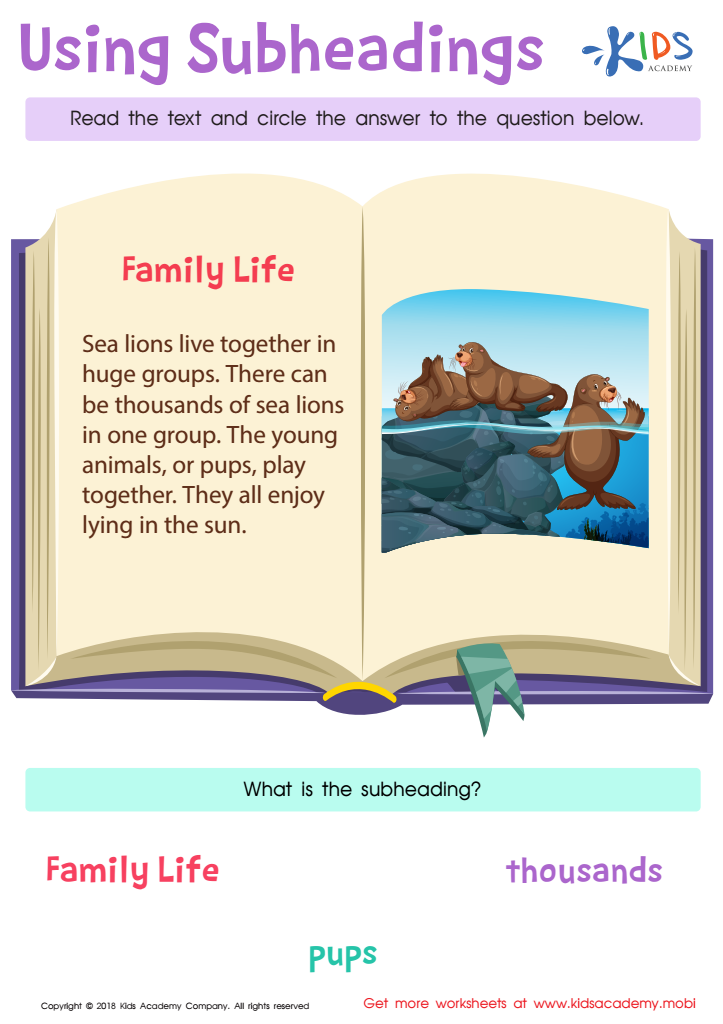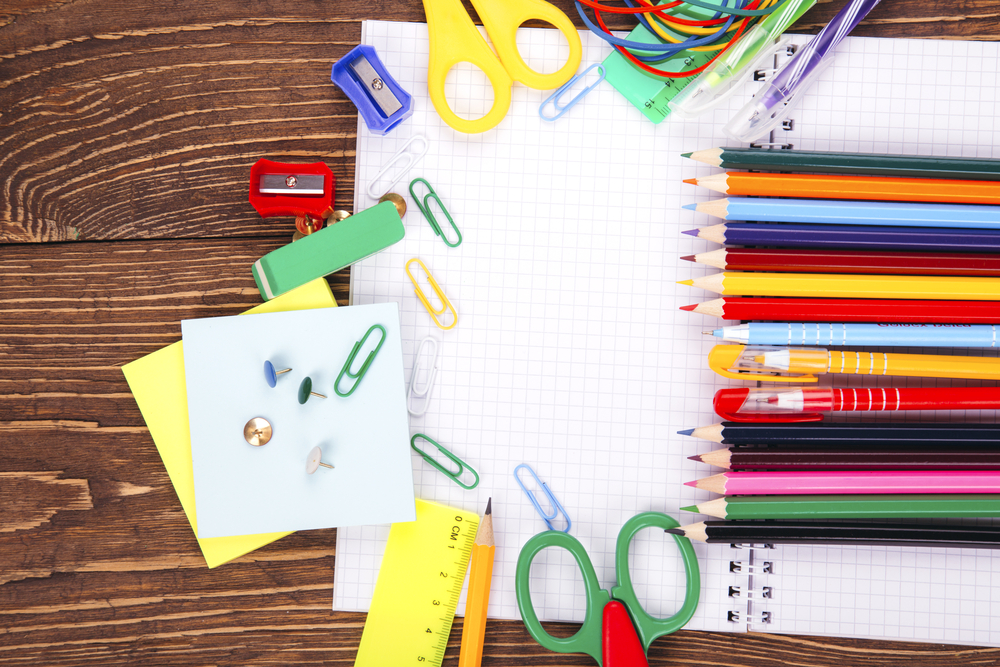Identifying subheadings Worksheets for Kids
1 filtered results
-
From - To


Using Subheadings Worksheet
Question/Answer
How does the mastery of the Identifying subheadings skill affect a student's performance at an early age?
Mastery of the Identifying subheadings skill at an early age significantly improves a student's reading comprehension and information retrieval abilities. It enables young learners to better navigate texts, discern main ideas quickly, and enhance their summarizing skills. This foundational competency lays the groundwork for effective study habits and academic success across various subjects.
How to test a Grade 2 student’s Identifying subheadings skills?
To test a Grade 2 student's ability to identify subheadings, present them with a short text divided into sections by subheadings. Ask the student to point out or underline the subheadings in the text. You could also ask them to match given subheadings with the correct paragraphs or to create appropriate subheadings for a given text without them.
What are some effective activities to train students’ Identifying subheadings skill when teaching them about Reading Non-Fiction?
Effective activities to train students in identifying subheadings when reading non-fiction include: 1. Scavenger hunts for information under specific subheadings. 2. Matching activities pairing subheadings with corresponding paragraphs or sections. 3. Creating their own subheadings for unmarked texts. 4. Summarizing paragraphs and crafting suitable subheadings. 5. Comparing and contrasting the content under different subheadings to understand their purpose and scope.
 Assign to the classroom
Assign to the classroom











